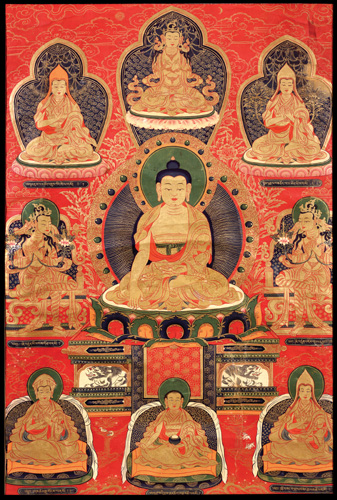Since our first issue, Tricycle has delivered traditional Buddhist teachings in an idiom and style relevant to the contemporary practitioner’s everyday life. How much has been lost—or gained—in adapting the traditional teachings has been a subject of much debate. It was inevitable, then, that alongside dharma teachings we would run articles that reflect critically on what we’re doing as we transmit Buddhism to the West. It’s a bit like crossing a bridge even as we’re building it. Presenting the dharma is the crossing, while critical reflection is building the culture of ideas that support it.

It hasn’t always been easy going. Well over a decade ago, the late Thinley Norbu Rinpoche decried the nihilism he claimed most Western teachers succumb to in teaching the dharma (Fall 1998). “Westerners,” he said, “always like to create something new, whether or not it is beneficial.” Others have been less critical. Segyu Rinpoche, for instance, founder of the Juniper school, has focused less on critique and turned his attention to the future of his own school and its relevance now. Emphasizing lineage as much as adaptation, he has laid out with his students a carefully conceived method for arriving at the new form his teachings are taking (“Buddhist Training for Modern Times,” Spring 2012).
It may seem that our current issue comes with a heavier dose of critical reflection than usual, but maybe that’s because the difference in views is particularly stark. On the one hand, Thai Forest monk Thanissaro Bhikkhu warns against partial readings of Buddhist scripture (“Lost in Quotation,” page 66), and Linda Heuman wonders what might be lost in the transmission of the dharma to a radically new cultural milieu (“What’s at Stake as the Dharma Goes Modern?” page 52). Stephen Batchelor, on the other hand, is comfortable distilling the dharma with a loose historical analysis, arriving at a bare-bones Buddhism stripped of what he considers its traditional cultural biases while acknowledging his own (“A Secular Buddhist,” page 44).
Amid all these voices comes a traditional view from Trinlay Tulku (“The Seeds of Life,” page 76”), the son of a French father and an American mother. Recognized at an early age as an incarnate lama, Trinlay was taught when he was just a young boy by highly traditional Tibetan teachers, most notably Kalu Rinpoche. He answers his interviewer’s sometimes skeptical questions about traditional Tibetan teachings on reincarnation with humor and grace. Of all the pieces in this issue, this one may seem most out of place, but in fact it offers us the very system of belief that has generated so much discussion among Buddhism’s Western heirs. His is an unapologetic presentation of a belief long considered central to Buddhism.
If we are building a bridge, it may feel a bit shaky at times, and sometimes we may even question whether it leads to the far shore. Yet adaptation and critique are inevitable, and both certainly are not new or unique to Westerners. Buddhism has generated arguments wherever it has made land. The strength of the bridge’s foundations will depend on the extent to which the discussion remains open, honest, and inclusive.